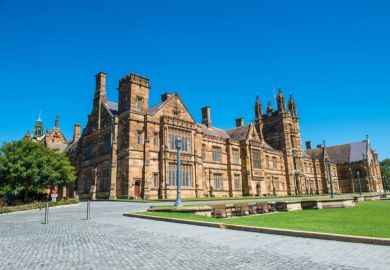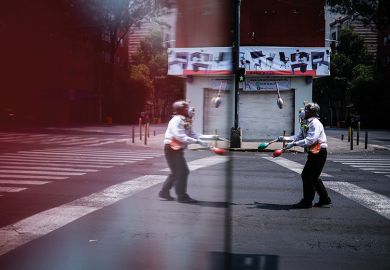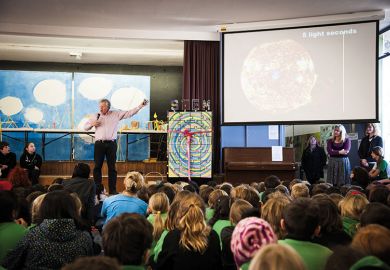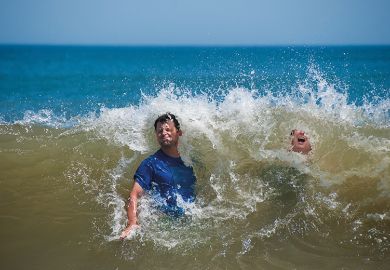Critics of rampant casualisation in Australian higher education are overlooking the “real-world” imperatives driving it, according to Innovative Research Universities executive director Conor King.
Mr King said that casualisation had expanded as universities struggled to accommodate snowballing numbers of students: “With the teaching required and the amount of reasonable research output you want, how do you combine that into a set of people employed on a reasonable basis? That’s the challenge.”
Mr King said that he would like the people who performed the teaching to be employed on a “better” basis – and at least some of them would be if universities had a more “open choice” about employment arrangements. He said that the biggest impediment was industrial procedures that made it difficult for universities to employ people in primarily teaching roles.
Institutions around the country have directed their employees to focus more on teaching to help ride out the economic impacts of Covid-19.
The University of Sydney has reportedly considered cutting the hours that some staff are allocated for research while maintaining their teaching responsibilities.
RMIT University’s science school asked tenured staff to assume teaching work previously done by casuals. A spokeswoman said that the university was exploring efficiencies as it grappled with the crisis.
Queensland University of Technology’s School of Public Health and Social Work moved to rebalance its staff’s workload allocations, so they spent less time on research and more on teaching.
Vice-chancellor Margaret Sheil said that the institution had “maintained as much casual and sessional support as possible” in semester one but would need to “do some things differently” in semester two.
Meanwhile, Murdoch University triggered a dispute with the National Tertiary Education Union (NTEU) after asserting unusually flexible provisions in its enterprise agreement to require staff to spend up to 80 per cent of their work time teaching.
The NTEU has even negotiated “scholarly teaching fellow” positions as a pathway for casual academics to be employed in teaching-focused roles with more secure, fixed-term contracts. But the arrangements have found limited popularity among both staff and institutions, with evaluations suggesting that they have had little if any effect on “aggregate casualisation”.
Australian National University policy expert Andrew Norton said that while there had been numerous attempts to formalise teaching-only or teaching-focused roles, the sector had largely sidestepped the issue via casual employment arrangements. According to education department statistics, casual staff numbers rose by 43 per cent last decade, while the overall higher education workforce grew by just 25 per cent.
Meanwhile, Professor Norton’s blog posts have shown that Australian universities’ research output has “boomed” this century, bankrolled by their “aggressive pursuit” of international students. “University leaders have maintained teaching-research academic numbers at higher levels than would have been otherwise possible,” he wrote.
“This probably accords with their personal views of what an academic career should look like. It is the type of role most of them would have had earlier in their careers. It also bought them some industrial peace from a workforce that is highly resistant to teaching-only academic careers.”
But he warned that the Covid-19 crisis would “re-expose” a reality that international student dollars had partially covered up – “that a large-scale teaching-research academic workforce is not viable on domestic higher education policy settings”.
Some supposedly research-active academics are said to do little more than teach, anyway – particularly former college of advanced education staff whose institutions became full-blown universities following the 1990s Dawkins reforms.
Conversely, some seasoned academics are said to do very little teaching, interpreting academic freedom as the right to research whatever they like. Professor Sheil said that she expected research-intensive positions to come under more pressure than traditional teaching-research roles.
In any case, Australian universities must undertake research in most areas in which they teach, under a requirement reaffirmed by last year’s Coaldrake Review of Provider Category Standards. It recommended maintaining research as a defining feature of universities, with benchmarks introduced for the quantity and quality of research.
“You can’t just give it up, or you’d risk your university title,” Mr King said. “And the research block grants are tied to research performance. No one is going to be reducing the kind of research that’s bringing in the money and the reputation.
“Every deputy vice-chancellor for research will tell you that 80 per cent of the research output is done by 20 per cent of the people doing research in the institution. There’s no question that they want that 20 per cent doing research. What’s really at stake is some of the research where the direct outcome is less noticeable.”
Register to continue
Why register?
- Registration is free and only takes a moment
- Once registered, you can read 3 articles a month
- Sign up for our newsletter
Subscribe
Or subscribe for unlimited access to:
- Unlimited access to news, views, insights & reviews
- Digital editions
- Digital access to THE’s university and college rankings analysis
Already registered or a current subscriber?








